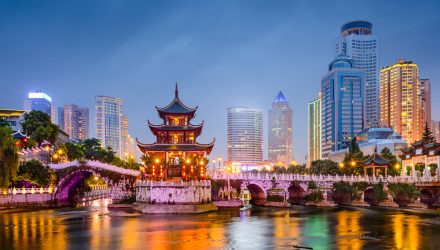Overseas investors are now able to access China’s $157 billion exchange traded fund market as the Hong Kong Connect program provides a direct link to the mainland Chinese market.
Four “feeder” ETFs started trading in Shenzhen and Hong Kong, marking the first batch of what is expected to be the beginning of a connection between the two markets, Bloomberg reports.
Hong Kong regulators have working to broaden trading links with mainland China to include ETFs since at least 2016. However, the plans have been delayed partly due to complex clearing and settlement issues.
Hong Kong’s ETF market, which stood at $40 billion in assets under management, is smaller than the mainland’s even though the region’s first fund was launched five years before China’s ETFs in 1999.
Over the first half of the year, China-listed ETFs almost doubled in value, reflecting the growing popularity of the cheap, index-based investment vehicle.
“This is the very start of ETF connectivity,” Bloomberg Intelligence analyst Sharnie Wong said.
Global ETF investors have access to ETFs that China’s onshore equity market in Hong Kong, London or New York, but these foreign-listed ETFs come with tracking errors that can be as high as 15%, partially due to limits on foreign ownership of mainland shares – overseas investors are currently allowed to own no more than 30% in yuan-denominated shares.
Consequently, some observers view the feeder ETFs listed in Hong Kong as a better way to replicate mainland benchmarks because their providers are local and won’t be subject to caps.
“It could take six years for northbound trading to contribute 5% to mainland China’s ETF turnover, assuming participation of international investors in ETFs is similar to that of A-shares,” Wong added. “It may take only two years for southbound trading to contribute 5% to Hong Kong’s ETF turnover, if mainland investors appetite for Hong Kong listed ETFs is similar to that of stocks.”
For more information on the developing economies, visit our emerging markets category.
